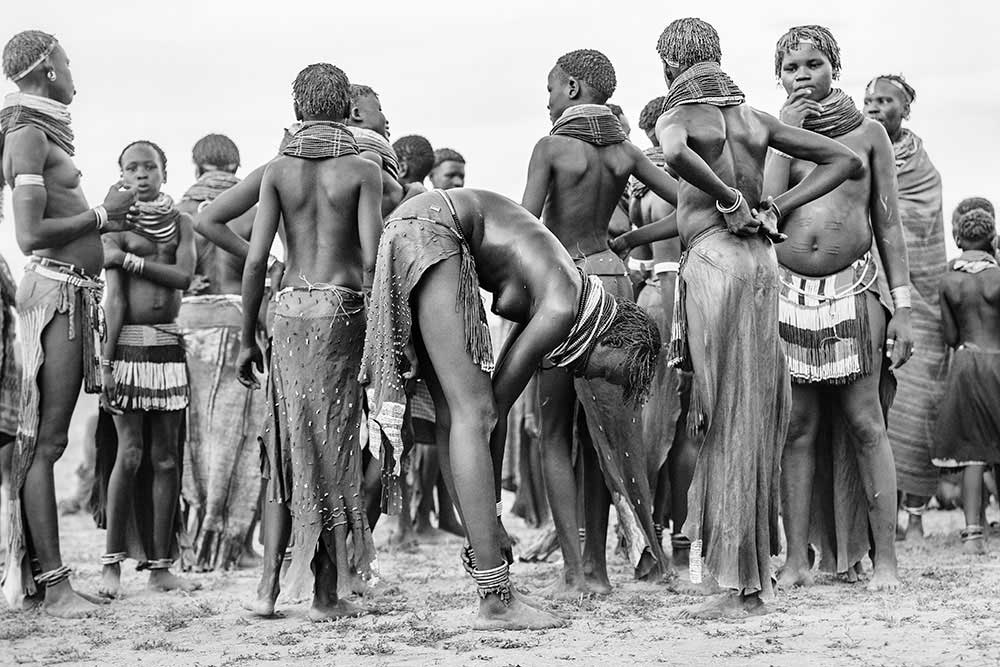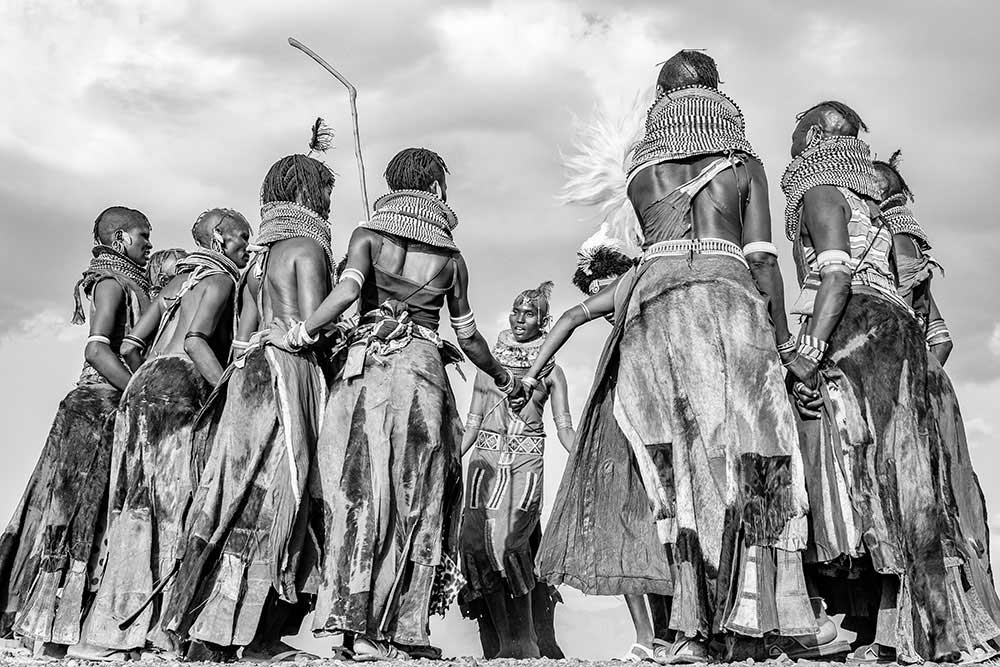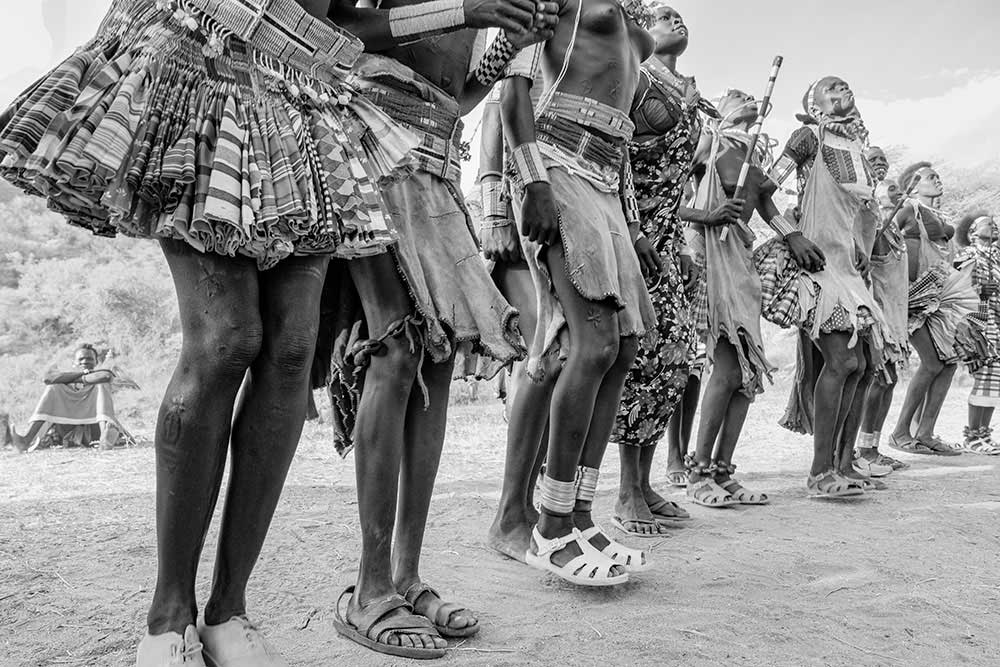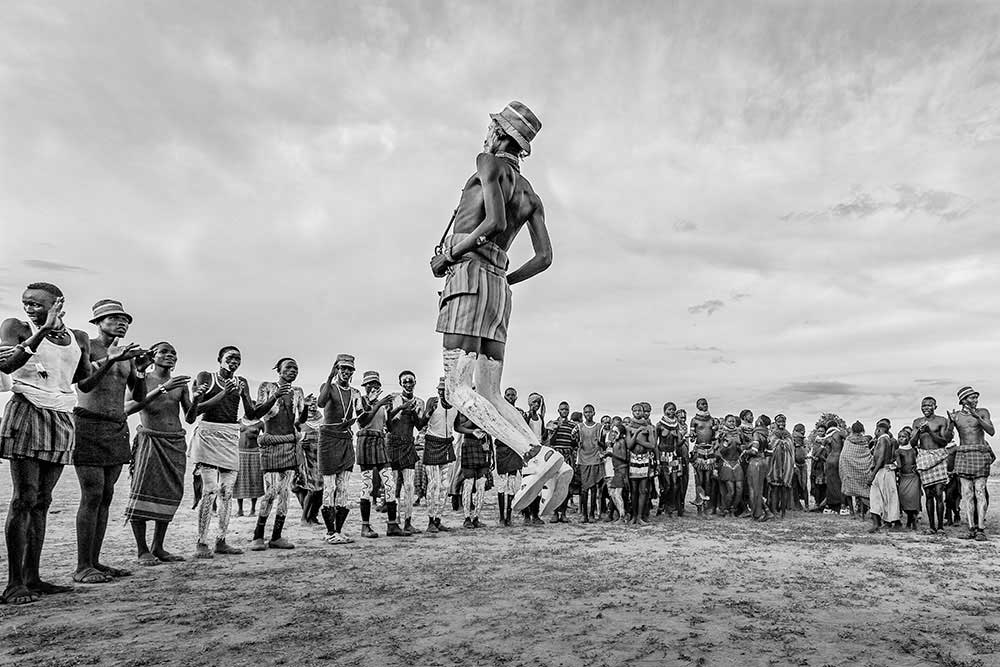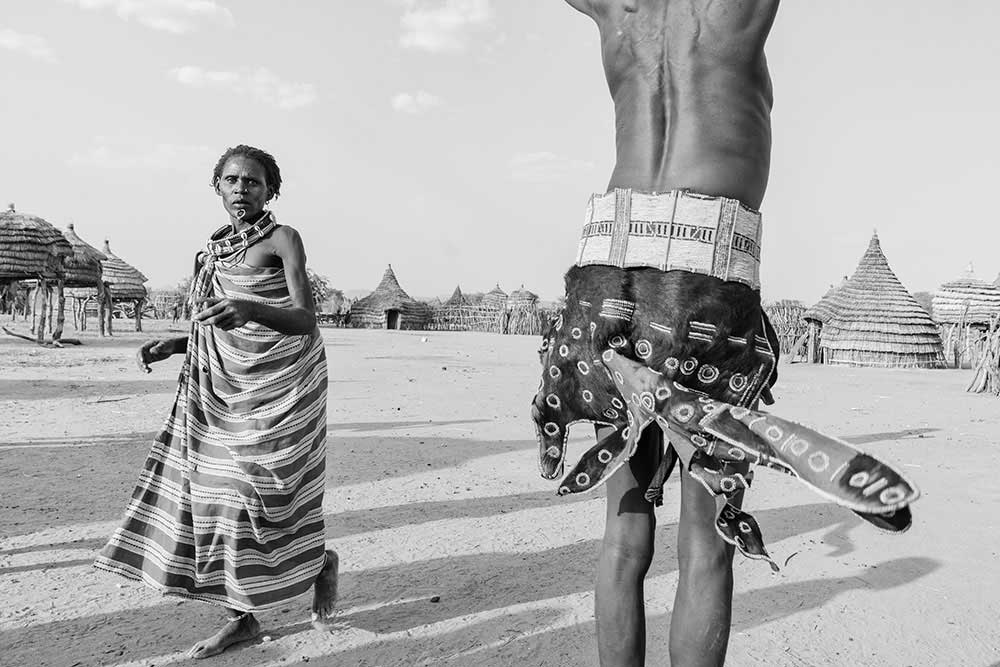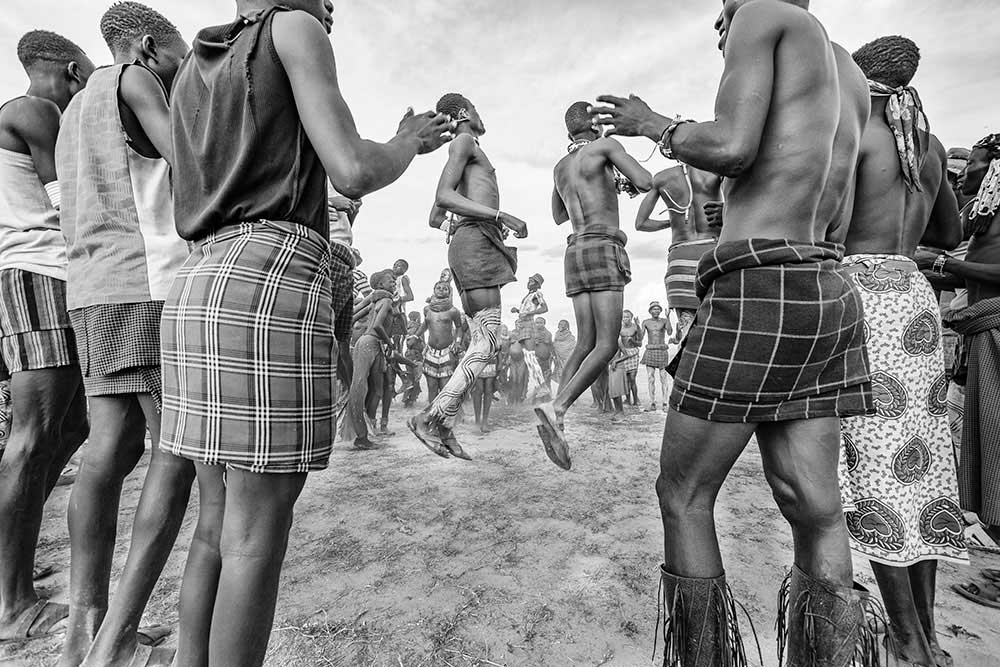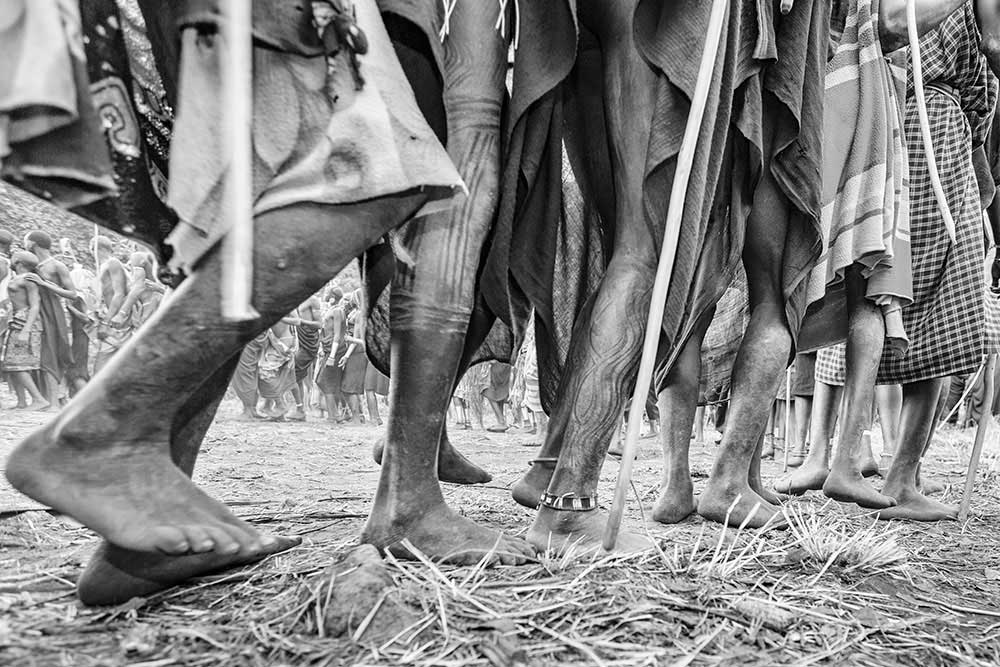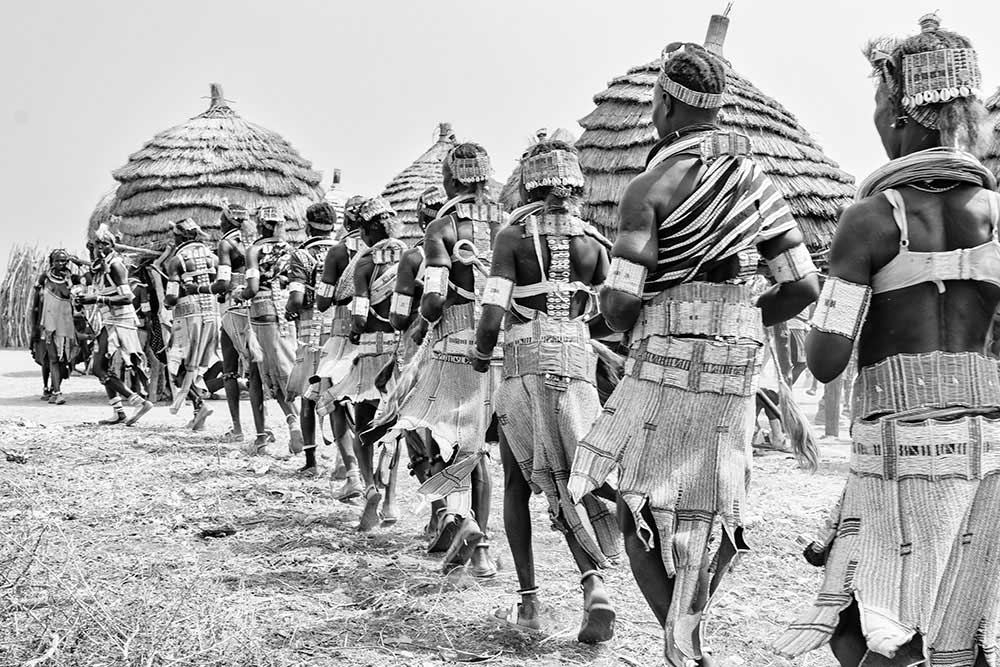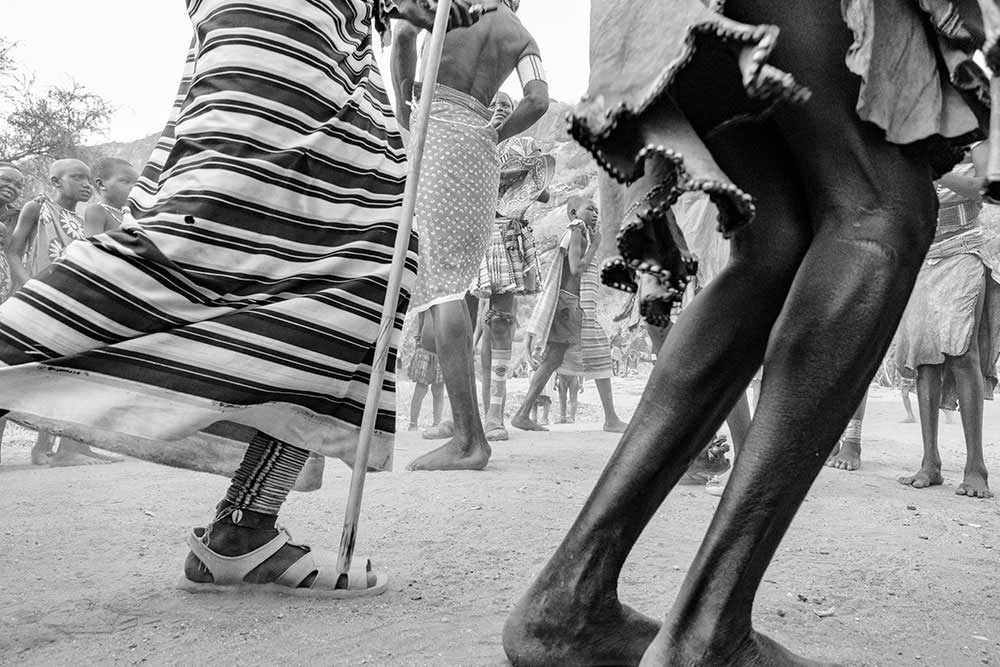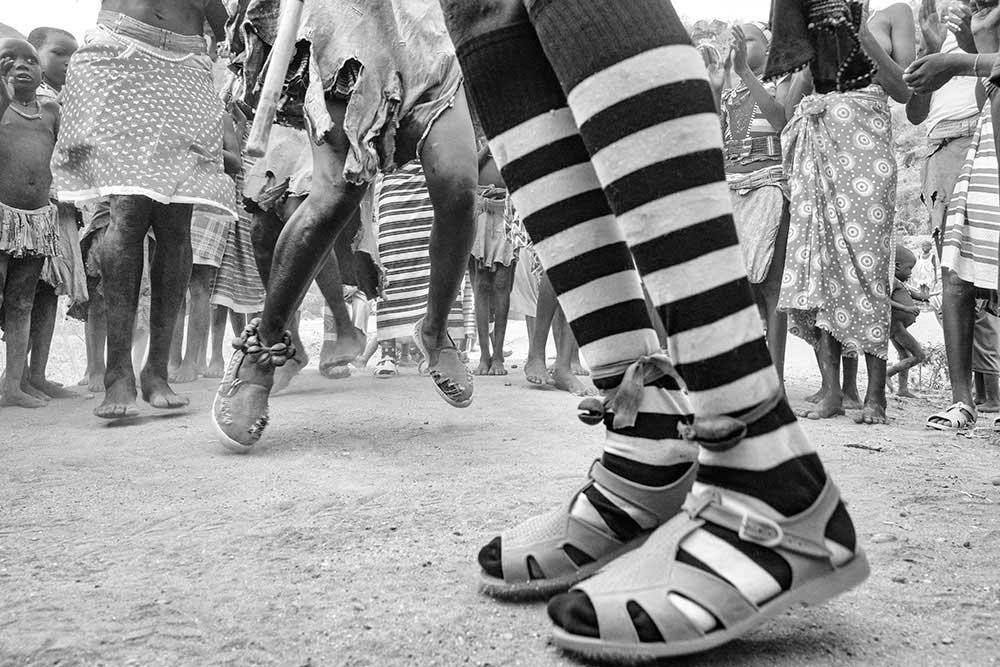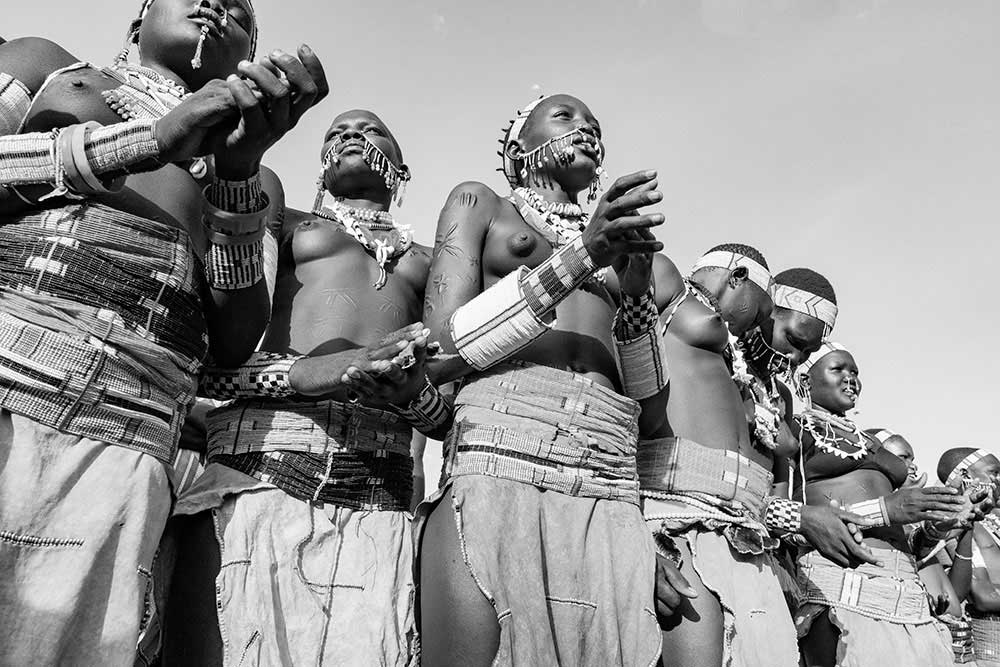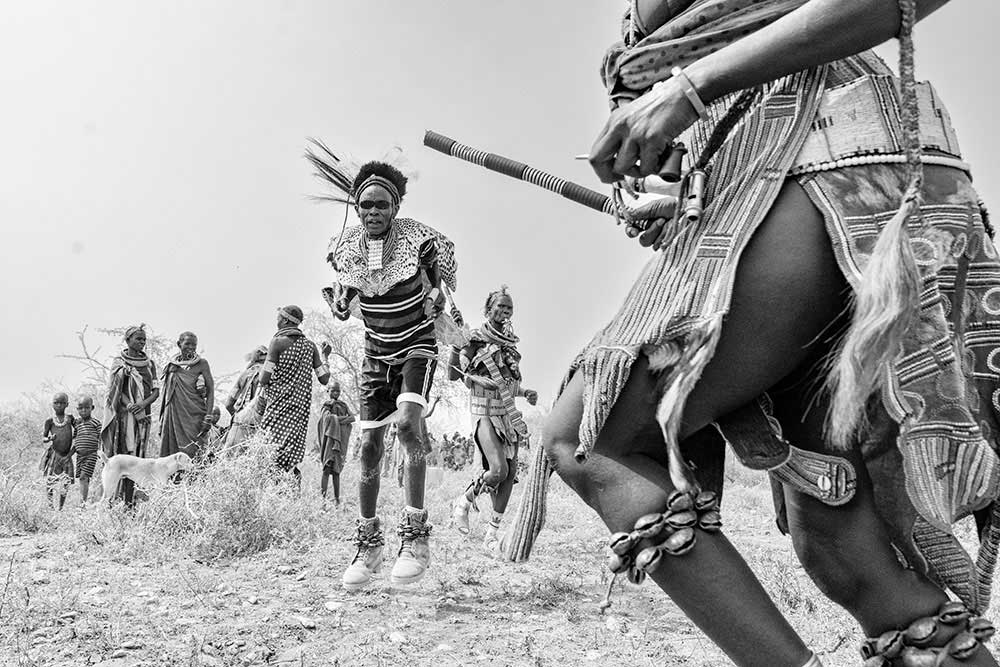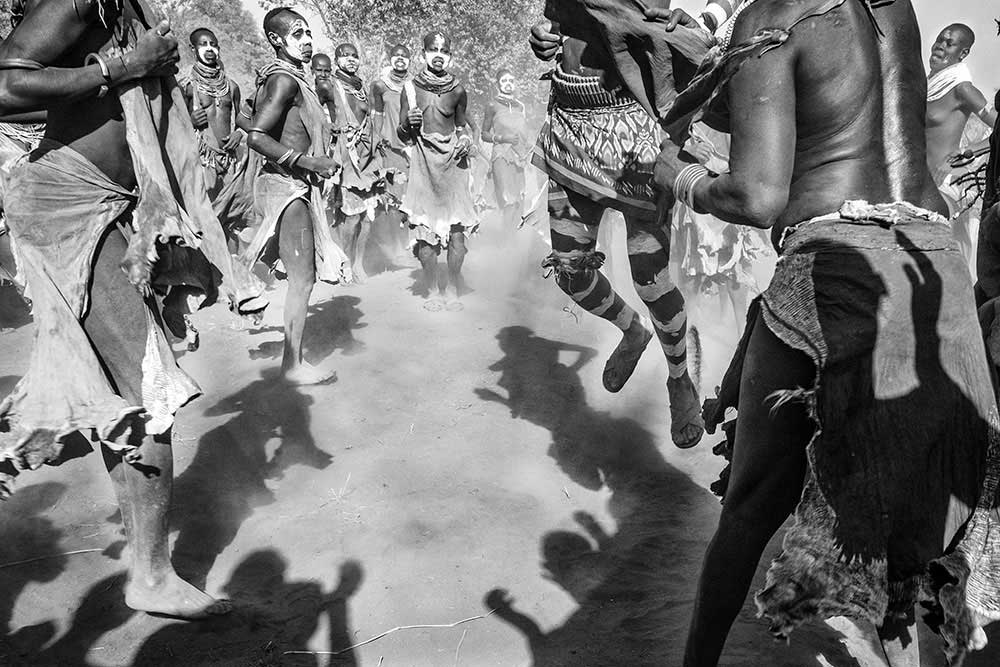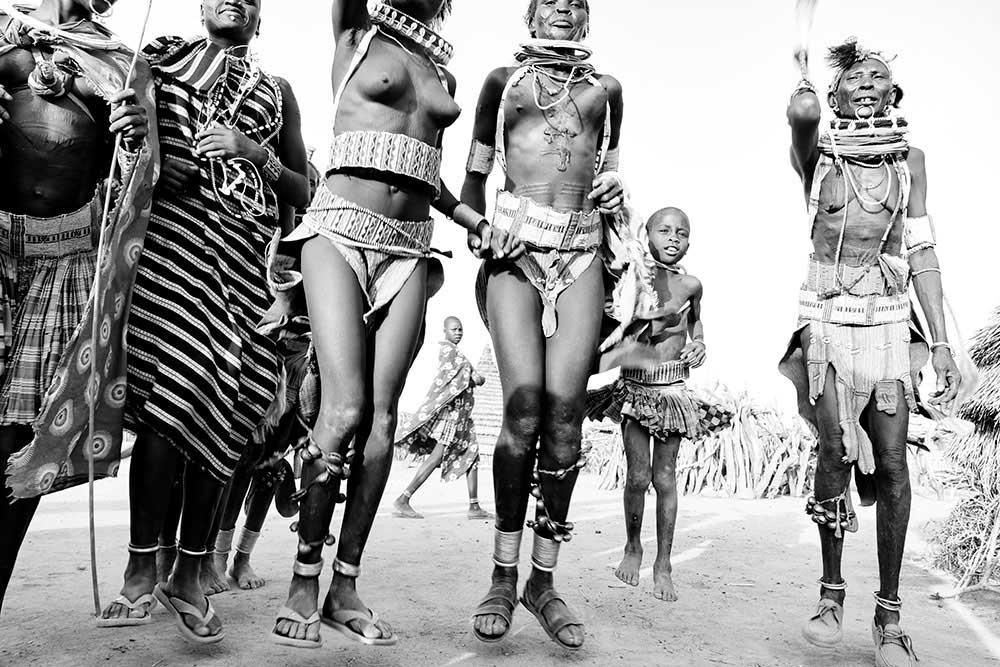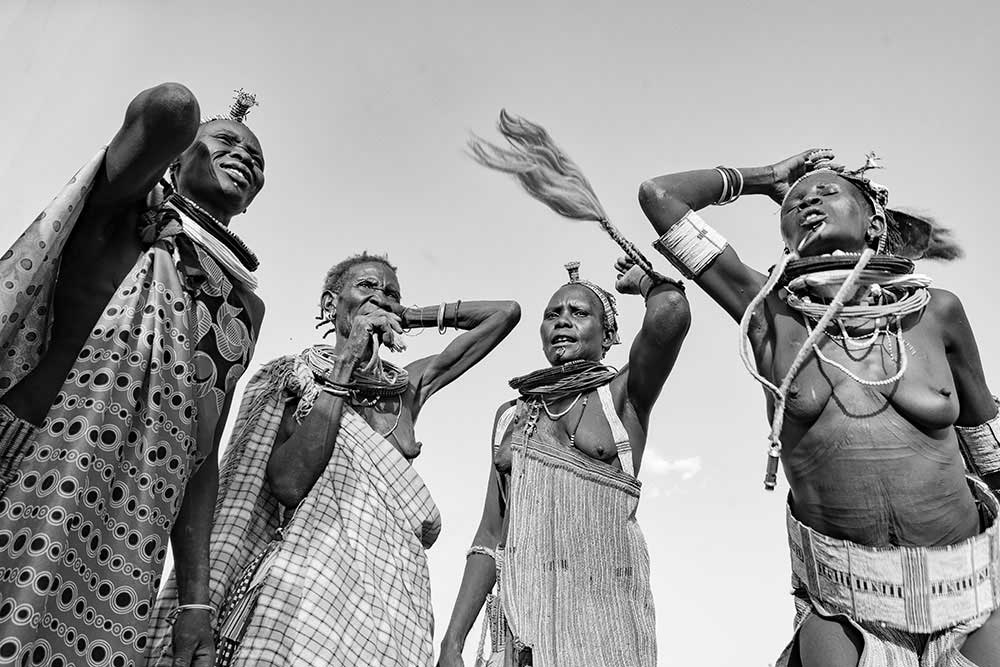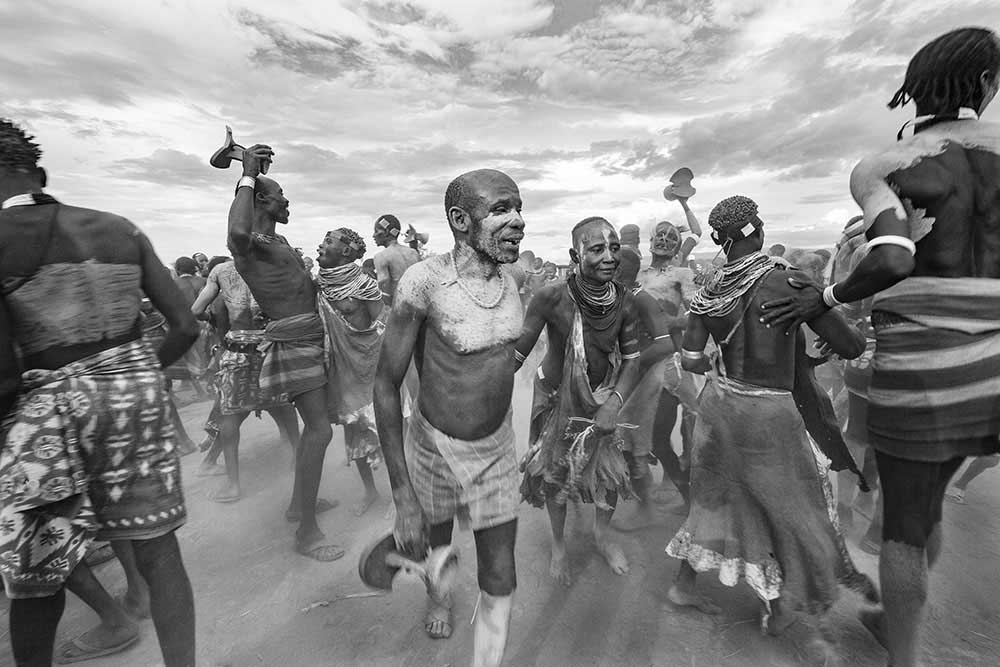As the sun is setting in the tribal areas of East Africa, one can often hear the sound of beating drums and joyful voices coming from the villages.
Music and dancing provide the primary forms of entertainment for these proud people, and the participants join in, spontaneously and wholeheartedly. Dancing is also a vital part of any rituals or rites of passage. For a tribe, dancing is a way to communicate, to celebrate, and to worship.
For the past ten years, I have been enjoying and photographing the dances performed by various East African tribes, some of which have been largely isolated from the influences the outside world. Here, I am sharing images of the Nyagatom, the Kara, and the Suri tribes from Ethiopia’s Omo Valley , the Larim and the Toposa tribes from South Sudan, and the Turkana tribe from Northern Kenya. Over the decade that I have been visiting these countries very little has changed in the performances of those dances aside from the occasional addition of some unexpected Western accessories that are slowing creeping into the local attire. And, though I understand that each of these dances is in some ways unique to the performing tribe, I find the rhythms, steps, and energy astonishingly similar from one tribe to the next (at least to my uniformed but appreciative eye), even among tribes that are longtime foes. One more bit of evidence, perhaps, that we are all relatives.
I am also constantly amazed at how inclusive these performances are. Everybody seems to know what to do and is welcome to join in. It is particularly heart-warming to see how quickly the young children are included and how proud they are to be part of the celebration.
Though I visited some of these tribes multiple times, I understand that one outsider can never fully grasp the extraordinary richness of these cultures. But I hope I have been able to capture some of the inherent beauty of their dances, which is such an integral part of their traditions.
About France Leclerc
France Leclerc, born in Québec, Canada, is an independent photographer who currently lives in Chicago. Her early career was in academia, but her true passion for documentary and street photography has now taken over. Among her most prominent themes are culture (especially vanishing ones), gender, and social inequality. She has been traveling around the world documenting people’s lives in diverse settings, often in out-of-the-way places. She often describes her work simply as “life photography” as her focus is always on people. [Official Website]



